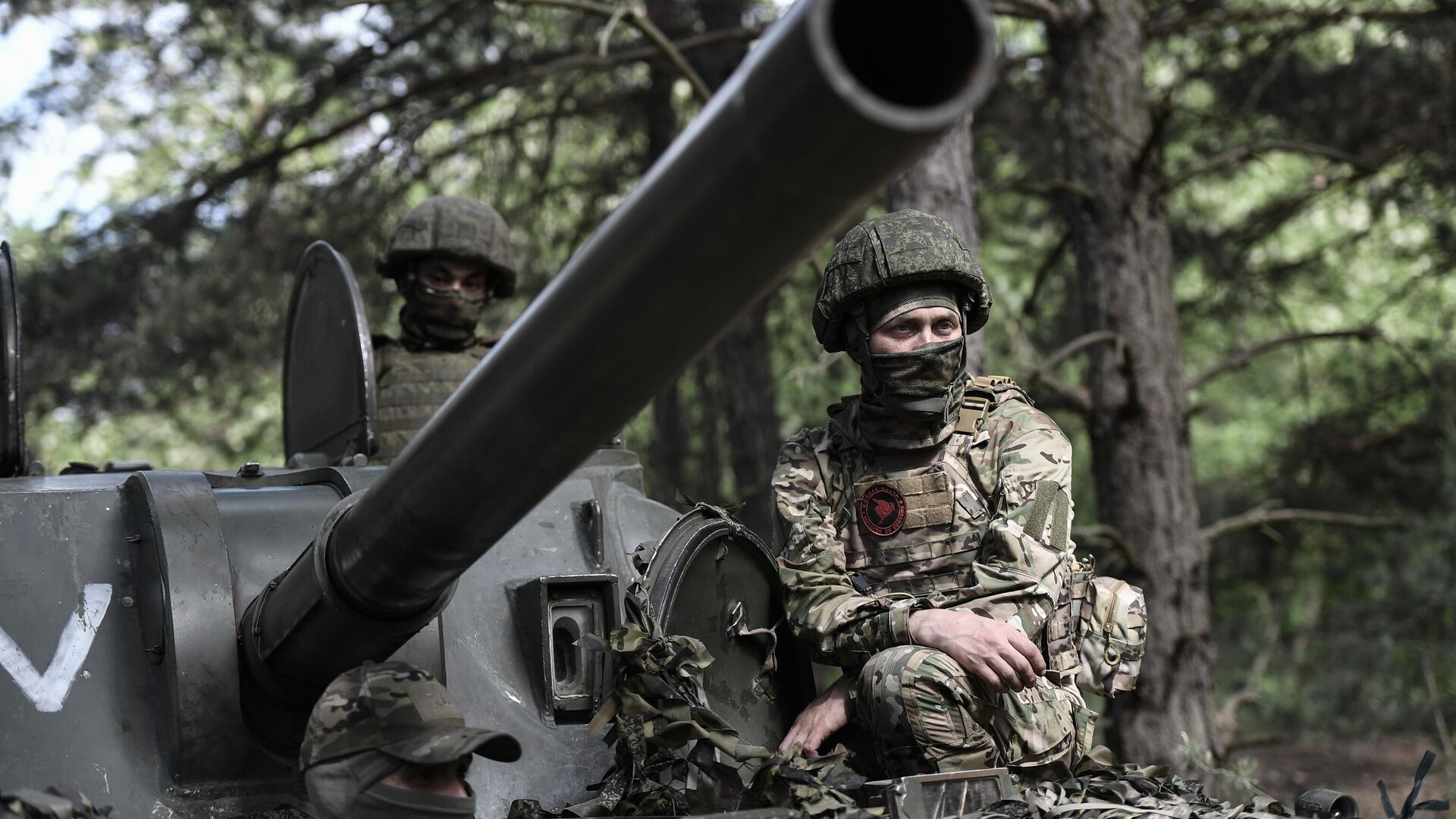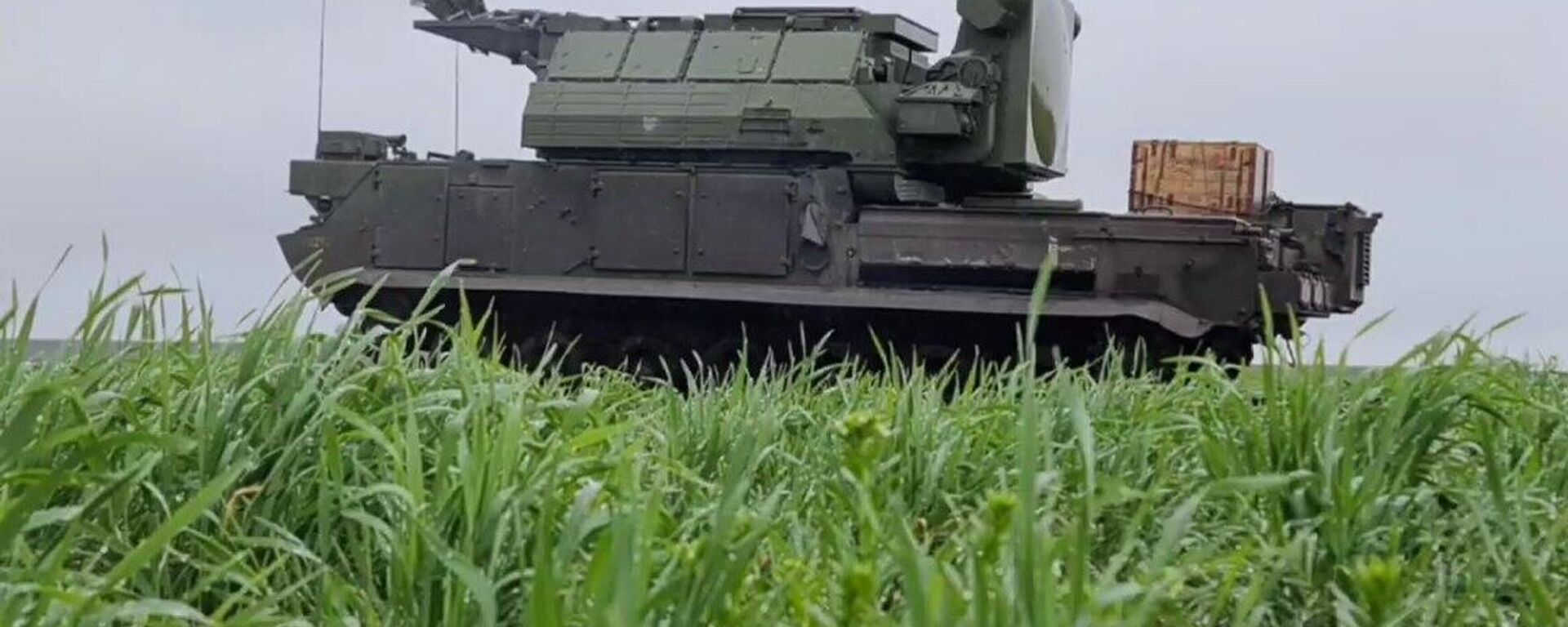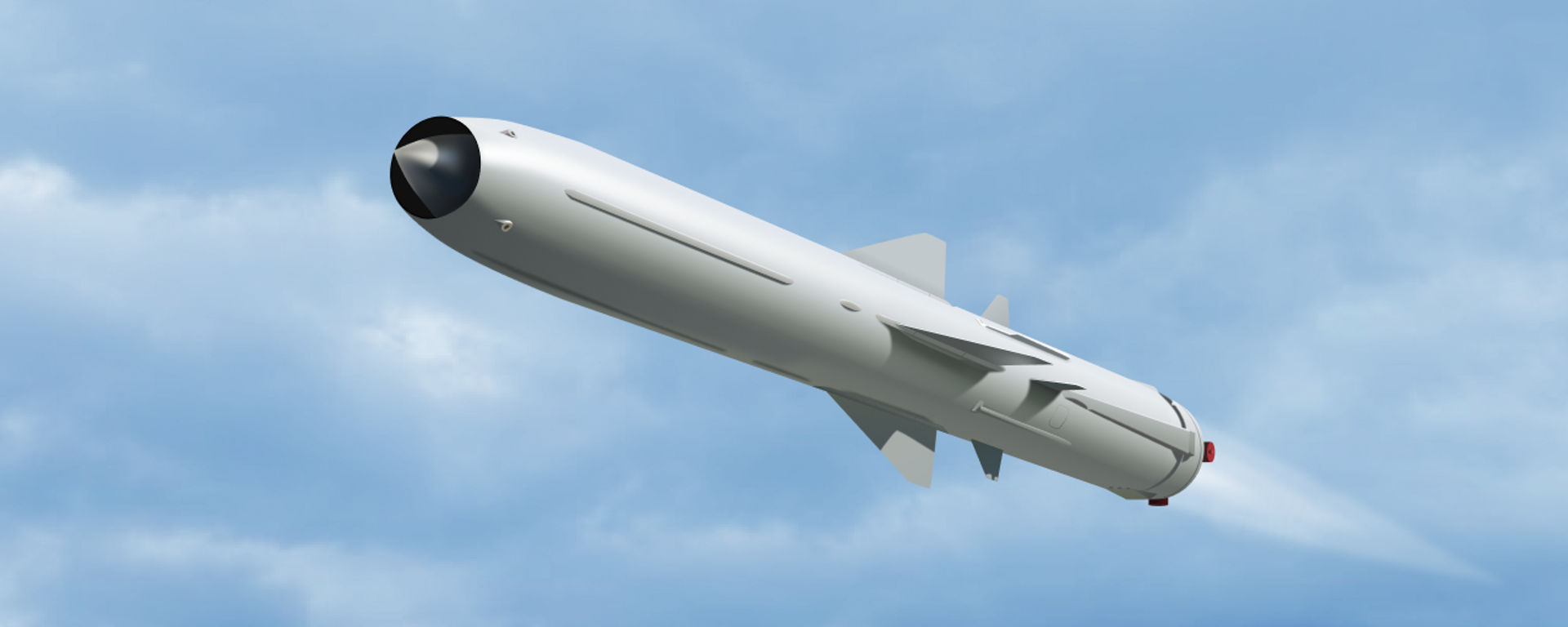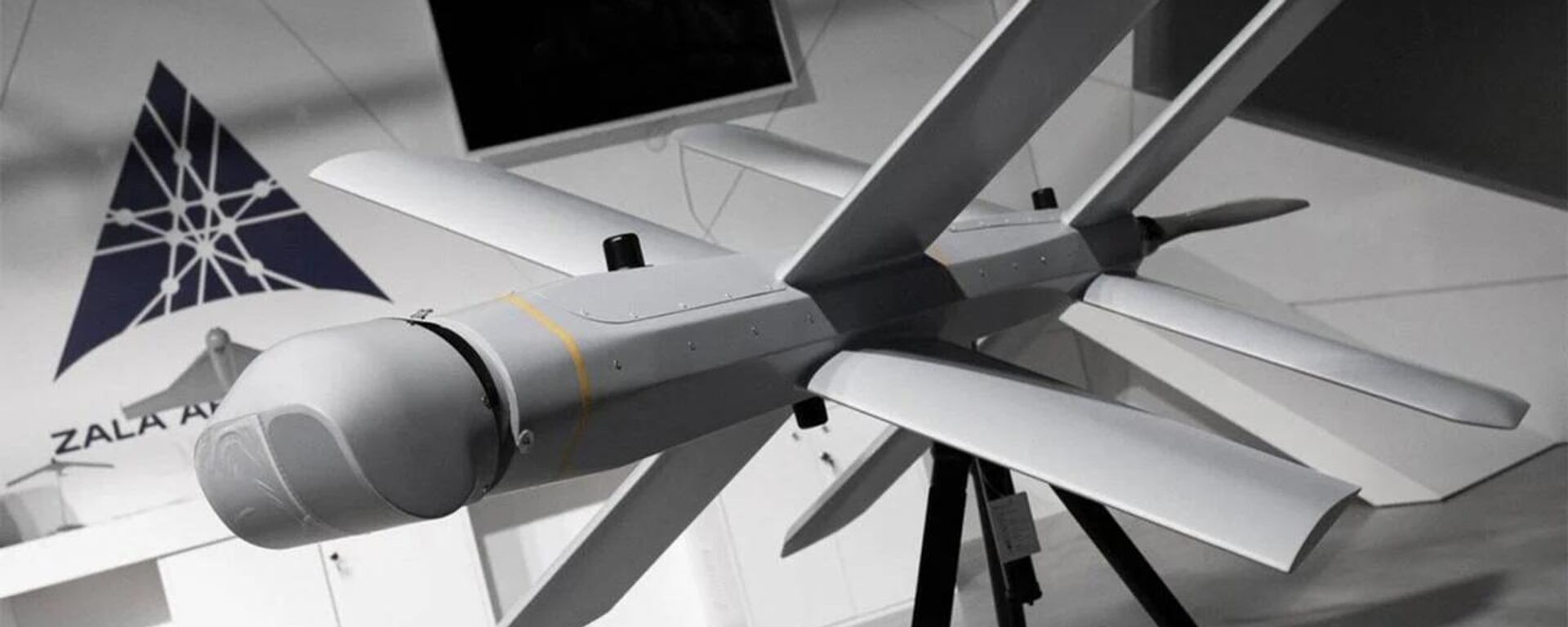https://sputnikglobe.com/20230726/russian-military-emerging-bigger-stronger-from-ukraine-conflict-1112158208.html
Russian Military Emerging Bigger, Stronger From Ukraine Conflict
Russian Military Emerging Bigger, Stronger From Ukraine Conflict
Sputnik International
Pentagon chief Lloyd Austin’s hope of seeing the Russian military emerging from the proxy war with NATO in Ukraine “weakened” has not materialized, with Russia ramping up munitions production and fielding new, more complex weapons systems. What’s Russia’s secret? Sputnik spoke to veteran military observer and author Andrei Martyanov to find out.
2023-07-26T15:00+0000
2023-07-26T15:00+0000
2023-07-26T15:00+0000
analysis
denis manturov
vladimir putin
russia
ukraine
nato
pentagon
tor-m2
buk-m3
onyx missiles
https://cdn1.img.sputnikglobe.com/img/07e7/06/19/1111456918_0:160:3072:1888_1920x0_80_0_0_76ffdd4274b6171bdaef450736ec094a.jpg
Russian Minister of Industry and Trade Denis Manturov announced this week that defense enterprises have already surpassed production figures for all of 2022 in the first half of this year, and that when it comes to munitions, output is on course to exceeding “the overall production volume” of 2022 on a monthly basis.Also this week, KB Mashinostroyeniya, a Moscow region-based state defense, scientific and design enterprise which makes Iskander missile systems, air-launched anti-tank weapons and other munitions, reported that it has ramped up the production of some munitions by up to 250 percent compared to 2022, and that the company is fulfilling the state defense order in full.NATO Can't Outgun RussiaPresident Putin promised back in March that the US and its allies won’t be able to outproduce Russia in Ukraine, pointing out that for every artillery shell or tank NATO builds and sends to Kiev, Russia will be able to produce three or more.And Russia’s output hasn’t been limited to legacy Cold War-era equipment, either, with defense enterprises demonstrating over the 18 months that it is capable of developing (and in many cases fielding en masse) a range of fundamentally new equipment, from a new generation of kamikaze UAVs to advanced anti-drone defenses, and smart systems featuring AI capabilities for drones and missiles.Moscow’s ability to withstand crushing Western sanctions and ramp up the production of a broad assortment of weapons flies in the face of bold predictions by senior US officials and media last year claiming that Russia would soon run out of chips for its missiles, that NATO’s advanced tanks would be able to cut through Russian defenses like a hot knife through butter, and that the country simply couldn’t match the wealthy and technologically advanced Western countries’ superior military technologies.Russia’s campaign of precision missile strikes on Ukrainian infrastructure, and the stalling of Kiev’s counteroffensive, have proven otherwise, with even the most vehemently anti-Russian Western legacy media now admitting that the counteroffensive has bogged down, prompting some US officials to rush to blame Ukrainian commanders’ tactics, and to insist that their equipment is not the problem.Having blown over $95 billion on arms to Ukraine, Western countries have increasingly started talking about their inability to keep providing Kiev with weapons and ammo at the same pace as they have up to now. Some European countries have calculated that their armies would be able to fight a full-scale war for as little as 24-48 hours after their sending weapons and ammo inventories to Kiev. Earlier this month, President Biden admitted to media that the United States was deploying cluster bombs to Ukraine because it was running low on conventional 155 mm artillery ammunition. The admission sparked harsh criticism from former President Donald Trump, who blasted Biden for essentially revealing that the emperor has no clothes.American 'Mythology' Meets Russian Reality“Those people from the think tanks [predicting the weakening of the Russian MIC], most of them never served a day in the armed forces. And to quote General Robert Latiff, author of the book Future War, ‘everything that the American public and politicians know about warfare is primarily from the entertainment industry.’ I’m beginning to think that many American generals also know and learn about warfare from the entertainment industry, from Hollywood. Those people are absolutely unprepared and not equipped to operate with basically what amounts to operational values, and they don’t even understand what they’re looking at,” Martyanov stressed.Characterizing the field of Russia studies in Western countries as “basically a wasteland” today, Martyanov suggested that they don’t have the ability to comprehend realities on the ground because they take their primary data from Kiev, which falsifies it, and from “pseudo-academic shysters” in US academia whose “only task is to rewrite and then reiterate what Russia is and what is history, especially of the 20th century, is, and sell it to the public and policymakers.”America's War Record: The ‘White Elephant’ in the RoomCommenting on the steady stream of triumphalist reporting in Western media over the past year that the Russian military industrial complex allegedly has been weakened in Ukraine, Martyanov said this amounted mostly to “sour grapes…professional anger and jealousy” on the part of the US defense establishment.“We cannot ignore this white elephant or 800 pound gorilla in the room,” which is that “American generals lost every single war they fought. And if anybody needs a reminder of that, how about they look at how the United States was leaving Afghanistan? But the point is not just Afghanistan, Iraq and Vietnam, of course, with the exception of the ‘glorious’ victory over Grenada."“For the average American political scientist who grew up with their Wall Street type economy, that’s the one I think they studied, they operate with gross domestic product numbers which are provided by Wall Street and shysters from the economic schools. They still cannot even grasp the idea” that the US could be weaker than its adversaries, Martyanov said.“For example, Russia produces as much steel as the United States. And it produces six times more aluminum…And when you look at these fundamental economic and military indices, how can you explain it? [Meanwhile] they still believe that they are the number one economy in the world, while China actually dwarfs the United States.”What are Russia's 'Network-Centric' Warfare CapabilitiesWestern observers covering the Ukrainian crisis have spilled a lot of virtual ink discussing network-centric warfare, the resource-intensive military doctrine aimed at translating armies’ informational advantage, gained through things like the effective use of communications, computer networking, advanced sensors and other tech, into a real-world battlefield advantage that results in faster speed of command, deployment and fire, increased survivability, improved awareness and greater lethality.Naturally, most have touted Ukraine’s NATO-provided network-centric capabilities, while characterizing Russia’s "bordering on non-existent."The reality says otherwise, Martyanov said, pointing, for starters, to Russia’s extensive use of a broad range of ballistic, cruise and hypersonic weaponry to target Ukrainian forces and infrastructure at standoff ranges, and Russian air defenses’ ability to ground the country’s air force to ensure near total air superiority.“Technologically, the United States cannot even produce anything comparable to that,” the observer emphasized.This is an area where Russia has had experience for decades, he noted, pointing, for example, to the networking capabilities of the MiG-31 interceptor, which can provide guidance for missiles launched by other aircraft flying in groups of up to six aircraft.“What it gives you is that your awareness of the environment grows dramatically. And this is done based on several fundamental principles, including what is called ‘data and sensor fusion’. When you can obtain and process information, for example, from infrared search and track to radar, to even some kind of other purely visual sources. And then you put together this information, you ‘fuse’ it and you have this much clearer picture.” That, in turn, “allows you to also efficiently redistribute or reassign targets.”How Long Has Russia Had Drone and AI Capabilities?In the field of drone warfare, where Russia seemed to lag behind NATO capabilities at the start of the Ukrainian proxy conflict, Martyanov noted that Russia’s perceived shortcomings concealed behind-the-scenes developments which have more than proven their capabilities this year.The same applies when it comes to so-called artificial intelligence (AI) technology, Martyanov said, recalling that the Onyx P-800 supersonic anti-ship missile’s predecessor, the P-700 Granit, had mathematically sophisticated proto-AI computing capabilities going back to 1983, including automatic target selection, evasion and coordination capabilities.“So these were the first missiles with what you would define as artificial intellect. And when the submarine was launching them, they could launch up to 24 in a single salvo, and they would communicate with each other, all 24 of them, will do their target distribution or receive targeting from each missiles, assigned the role of a remote radar control,” he said.“And when you look at this, this was a terrifying weapon. And the Russians have had it for 40 years now; and then obviously the more modern Onyx P-800, which is used very actively in and around Ukraine. It was used also to huge effect in Syria,” Martyanov noted.“But yes, it’s nothing new. And now we have Lancet-3s, which is the complete swarm technology. They can communicate, they can redirect targets. They can decide on their own what to attack. So yes, radio-electronics advanced quite significantly since the 1970s and 1980s,” the military analyst summed up.
https://sputnikglobe.com/20230718/western-officials-blame-ukraines-tactics-for-stalled-counteroffensive-1111965571.html
https://sputnikglobe.com/20220815/how-taliban-stormed-across-afghanistan-smashing-nato-trained-army-in-ten-days-1099556063.html
https://sputnikglobe.com/20230703/will-the-us-dollar-be-replaced-by-the-yuan-1111643891.html
https://sputnikglobe.com/20230429/watch-russian-tor-m2-sam-destroy-ukrainian-drone-while-evading-attack-1109943572.html
https://sputnikglobe.com/20220815/russian-mig-31-chases-british-spy-plane-out-after-it-violates-russian-airspace-russian-mod-1099627221.html
https://sputnikglobe.com/20230724/onyx-characteristics-of-russias-unstoppable-missile-1112115543.html
https://sputnikglobe.com/20230515/what-is-the-lancet-kamikaze-drone-and-what-makes-it-so-deadly-1110378634.html
russia
ukraine
Sputnik International
feedback@sputniknews.com
+74956456601
MIA „Rossiya Segodnya“
2023
News
en_EN
Sputnik International
feedback@sputniknews.com
+74956456601
MIA „Rossiya Segodnya“
Sputnik International
feedback@sputniknews.com
+74956456601
MIA „Rossiya Segodnya“
russia, ukraine, network-centric warfare, weapons, conflict, proxy war, technology, military industry, capabilities, defense industrial base, military industry, military capabilities, united states, nato, military-industrial complex, onyx, mig-31, drone, anti-drone, drone warfare, kamikaze drone, onyx missile, lancet drone, lancet, nato vs russia, myths, white elephant, aritifical intelligence, ai, military artificial intelligence
russia, ukraine, network-centric warfare, weapons, conflict, proxy war, technology, military industry, capabilities, defense industrial base, military industry, military capabilities, united states, nato, military-industrial complex, onyx, mig-31, drone, anti-drone, drone warfare, kamikaze drone, onyx missile, lancet drone, lancet, nato vs russia, myths, white elephant, aritifical intelligence, ai, military artificial intelligence
Russian Minister of Industry and Trade Denis Manturov announced this week that defense enterprises have already surpassed production figures for all of 2022 in the first half of this year, and that when it comes to munitions, output is
on course to exceeding “the overall production volume” of 2022 on a monthly basis.
Also this week, KB Mashinostroyeniya, a Moscow region-based state defense, scientific and design enterprise which makes Iskander missile systems, air-launched anti-tank weapons and other munitions,
reported that it has ramped up the production of some munitions by up to 250 percent compared to 2022, and that the company is fulfilling the state defense order in full.
President Putin promised back in March that the US and its allies
won’t be able to outproduce Russia in Ukraine, pointing out that for every artillery shell or tank NATO builds and sends to Kiev, Russia will be able to produce
three or more.
And Russia’s output hasn’t been limited to legacy Cold War-era equipment, either, with defense enterprises demonstrating over the 18 months that it is capable of developing (and in many cases fielding en masse) a range of
fundamentally new equipment, from a
new generation of kamikaze UAVs to advanced
anti-drone defenses, and smart systems
featuring AI capabilities for drones and missiles.
Moscow’s ability to withstand crushing Western sanctions and ramp up the production of a broad assortment of weapons flies in the face of bold predictions by senior US officials and media last year
claiming that Russia would soon run out of chips for its missiles,
that NATO’s advanced tanks would be able to cut through Russian defenses like a hot knife through butter, and that the country simply couldn’t match the wealthy and technologically advanced Western countries’ superior military technologies.
Russia’s campaign of precision missile strikes on Ukrainian infrastructure, and the stalling of Kiev’s counteroffensive, have proven otherwise, with even the most vehemently anti-Russian Western legacy media now admitting that the counteroffensive
has bogged down, prompting some US officials to rush to blame Ukrainian commanders’ tactics, and to insist that their equipment is not the problem.
Having blown over
$95 billion on arms to Ukraine, Western countries have increasingly started talking about their inability to keep providing Kiev with weapons and ammo at the same pace as they have up to now. Some European countries have calculated that their armies would be able to fight a full-scale war for as little as
24-48 hours after their sending weapons and ammo inventories to Kiev. Earlier this month, President Biden
admitted to media that the United States was deploying cluster bombs to Ukraine because it was running low on conventional 155 mm artillery ammunition. The admission sparked
harsh criticism from former President Donald Trump, who blasted Biden for essentially revealing that the emperor has no clothes.
American 'Mythology' Meets Russian Reality
“Let me put it this way: We have witnessed, in the last 15 months, a ‘21+ mature audiences only explicit’ demolition of the American military mythology and American technological mythology,” Andrei Martyanov, a veteran Russian military analyst and
best-selling author, told Sputnik’s New Rules podcast.
“Those people from the think tanks [predicting the weakening of the Russian MIC], most of them never served a day in the armed forces. And to quote General Robert Latiff, author of the book
Future War,
‘everything that the American public and politicians know about warfare is primarily from the entertainment industry.’ I’m beginning to think that many American generals also know and learn about warfare from the entertainment industry, from Hollywood. Those people are absolutely unprepared and not equipped to operate with basically what amounts to operational values, and they don’t even understand what they’re looking at,” Martyanov stressed.
Characterizing the field of Russia studies in Western countries as “basically a wasteland” today, Martyanov suggested that they don’t have the ability to comprehend realities on the ground because they take their primary data from Kiev, which falsifies it, and from “pseudo-academic shysters” in US academia whose “only task is to rewrite and then reiterate what Russia is and what is history, especially of the 20th century, is, and sell it to the public and policymakers.”
America's War Record: The ‘White Elephant’ in the Room
Commenting on the steady stream of
triumphalist reporting in Western media over the past year that the Russian military industrial complex allegedly has been
weakened in Ukraine, Martyanov said this amounted mostly to “sour grapes…professional anger and jealousy” on the part of the US defense establishment.
“We cannot ignore this white elephant or 800 pound gorilla in the room,” which is that “American generals lost every single war they fought. And if anybody needs a reminder of that, how about they look at how the United States was leaving Afghanistan? But the point is not just Afghanistan, Iraq and Vietnam, of course, with the exception of the ‘glorious’ victory over Grenada."

15 August 2022, 05:00 GMT
"The point is, just to give you a technological example…that the United States in terms of air defenses…is not even in the same league with Russia. In terms of cruise missiles, again, the United States lags here not by years, it lags by generations. And the same goes for armor, the same goes for operational concepts and things of this nature, and even in electronic warfare,” the observer stressed.
“For the average American political scientist who grew up with their Wall Street type economy, that’s the one I think they studied, they operate with gross domestic product numbers which are provided by Wall Street and shysters from the economic schools. They still cannot even grasp the idea” that the US could be weaker than its adversaries, Martyanov said.
“For example, Russia produces as much steel as the United States. And it produces six times more aluminum…And when you look at these fundamental economic and military indices, how can you explain it? [Meanwhile] they still believe that they are the number one economy in the world, while China actually dwarfs the United States.”
What are Russia's 'Network-Centric' Warfare Capabilities
Western observers covering the Ukrainian crisis have spilled a lot of virtual ink discussing network-centric warfare, the resource-intensive military doctrine aimed at translating armies’ informational advantage, gained through things like the effective use of communications, computer networking, advanced sensors and other tech, into a real-world battlefield advantage that results in faster speed of command, deployment and fire, increased survivability, improved awareness and greater lethality.
Naturally, most have
touted Ukraine’s NATO-provided network-centric capabilities, while characterizing Russia’s "bordering on non-existent."
The reality says otherwise, Martyanov said, pointing, for starters, to Russia’s extensive use of a broad range of ballistic, cruise and hypersonic weaponry to target Ukrainian forces and infrastructure at standoff ranges, and Russian air defenses’ ability to ground the country’s air force to ensure near total air superiority.
“The Russian air defense systems have been in the net-centric paradigm a long time now – since Soviet times, actually,” the military expert said, pointing, for example, to the ultra-long range R-37 missile, which has confirmed kills at ranges beyond 200 km. The same is the case with ground-based anti-air defenses, which have seen “just [an] absolute dramatic improvement” in performance on the immediate battlefield, Martyanov noted, citing “the Pantsir-S1…the Tor-M2 and the Buk-M3 and things of this nature.”
“Technologically, the United States cannot even produce anything comparable to that,” the observer emphasized.
“Net-centric warfare and everything associated with it is designed to resolve uncertainties in targeting and detection of targets. Generally speaking, to put it into simple words, it is when each shooter communicates with each shooter in the appropriate theater or in the appropriate environment,” Martyanov said.
This is an area where Russia has had experience for decades, he noted, pointing, for example, to the networking capabilities of the
MiG-31 interceptor, which can provide guidance for missiles launched by other aircraft flying in groups of up to six aircraft.
“What it gives you is that your awareness of the environment grows dramatically. And this is done based on several fundamental principles, including what is called ‘data and sensor fusion’. When you can obtain and process information, for example, from infrared search and track to radar, to even some kind of other purely visual sources. And then you put together this information, you ‘fuse’ it and you have this much clearer picture.” That, in turn, “allows you to also efficiently redistribute or reassign targets.”
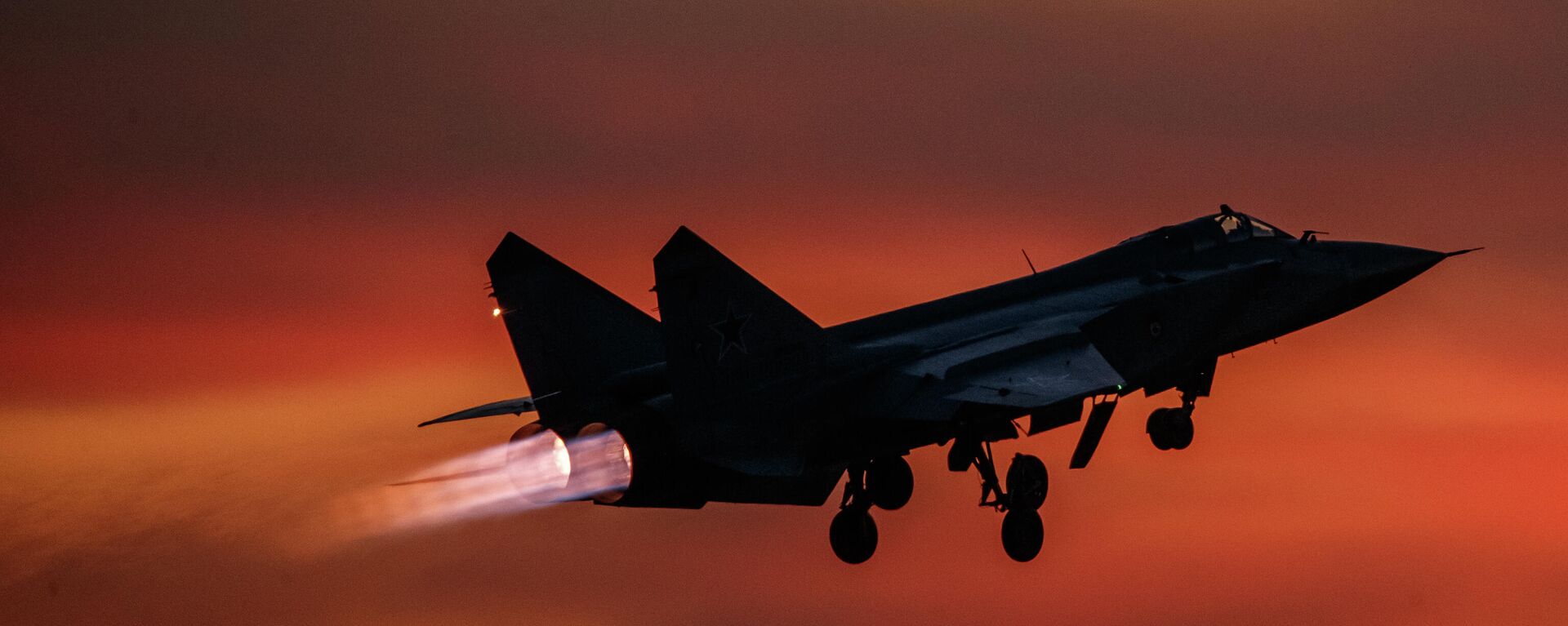
15 August 2022, 18:14 GMT
How Long Has Russia Had Drone and AI Capabilities?
In the field of drone warfare, where Russia seemed to lag behind NATO capabilities at the start of the Ukrainian proxy conflict, Martyanov noted that Russia’s perceived shortcomings concealed behind-the-scenes developments which have more than proven their capabilities this year.
“The point is, even already at the end of the 2000s and the start of the 2010s, Russia was actively in the development of drone technology. So it’s not like it came out and suddenly ‘oh my gosh, you see we have the drones and the Russians just sort of leapfrogged in to some kind of new paradigm.’ It was always there. Don’t forget, some of the first drones ever were the [Soviet Tupolev Tu-143] Reys drones. Obviously, they were nothing like the modern ones, but the Soviet army was using them extensively already in the 1970s. So it’s not like it’s something new. What is new, of course, and especially with the Lancet-3…is the fact that they use swarms now.”
The same applies when it comes to so-called artificial intelligence (AI) technology, Martyanov said, recalling that the
Onyx P-800 supersonic anti-ship missile’s predecessor, the
P-700 Granit, had mathematically sophisticated proto-AI computing capabilities going back to 1983, including automatic target selection, evasion and coordination capabilities.
“So these were the first missiles with what you would define as artificial intellect. And when the submarine was launching them, they could launch up to 24 in a single salvo, and they would communicate with each other, all 24 of them, will do their target distribution or receive targeting from each missiles, assigned the role of a remote radar control,” he said.
“And when you look at this, this was a terrifying weapon. And the Russians have had it for 40 years now; and then obviously the more modern Onyx P-800, which is used very actively in and around Ukraine. It was used also to huge effect in Syria,” Martyanov noted.
“But yes, it’s nothing new. And now we have
Lancet-3s, which is the complete swarm technology. They can communicate, they can redirect targets. They can decide on their own what to attack. So yes, radio-electronics advanced quite significantly since the 1970s and 1980s,” the military analyst summed up.
